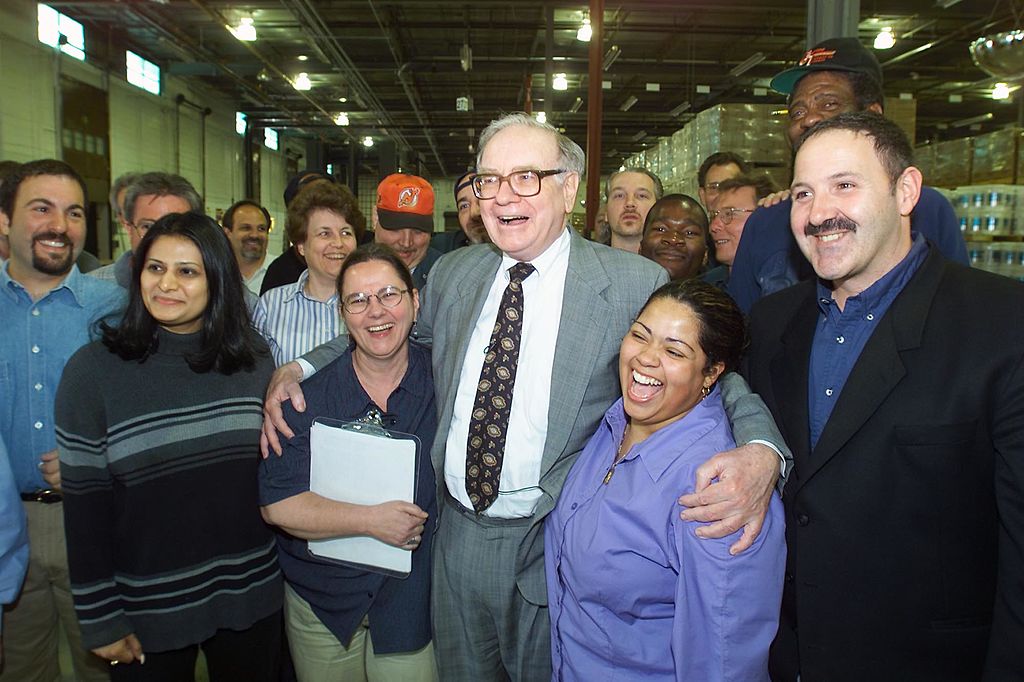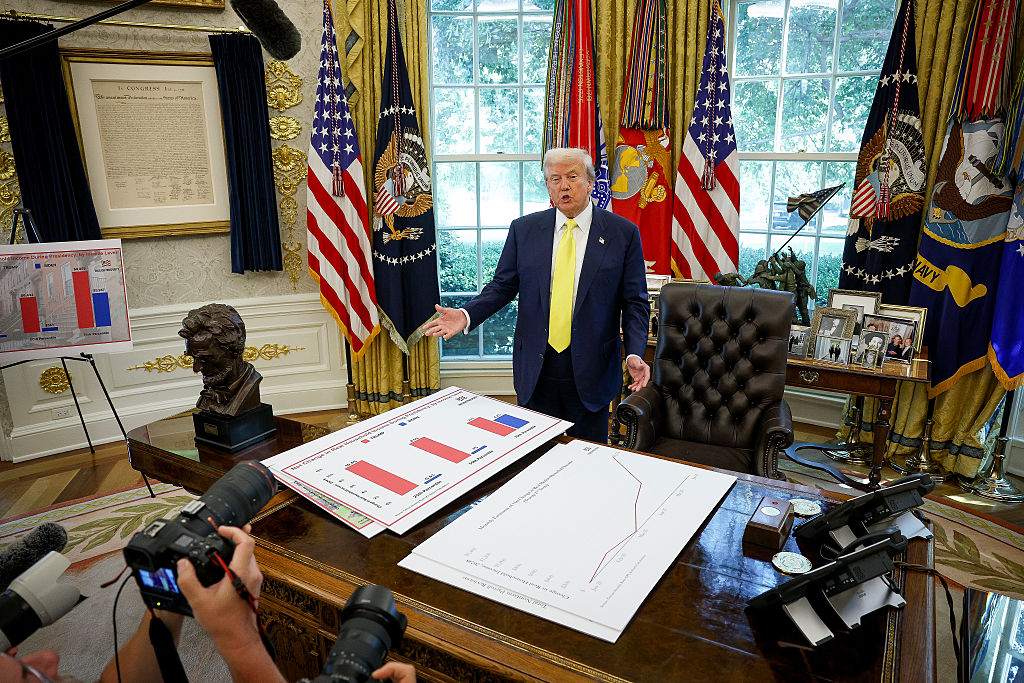Seven Bargain Stocks
Unknown and unloved, these stocks hold the potential for big gains.

Sometimes stocks are like the sweaters you find at red-tag sales. They may be out of fashion, but they'll keep you warm this winter (and may even come back into style next year).
With that in mind, we went shopping in the stock-market equivalent of the final-markdown bin: companies with shares trading in single digits. Companies at these price points are often reclamation projects -- they've suffered from horrible missteps and are trading at a fraction of their former value. Relatively few analysts cover low-priced stocks, and institutional investors usually avoid them.
| Row 0 - Cell 0 | Latest Stock Coverage |
| Row 1 - Cell 0 | Questions to Ask a Financial Adviser |
| Row 2 - Cell 0 | The Manic Universe of Jim Cramer |
But although comeback stories are relatively rare, they happen often enough to make it worthwhile to hunt in the bargain bin every now and then. For example, you could have bought fiber-optics maker Corning for a little over a buck in 2002. Today it's a $23 stock. Akamai Technologies, an Internet-services firm, soared from $1 in 2003 to $45 today.
From just $107.88 $24.99 for Kiplinger Personal Finance
Be a smarter, better informed investor.

Sign up for Kiplinger’s Free Newsletters
Profit and prosper with the best of expert advice on investing, taxes, retirement, personal finance and more - straight to your e-mail.
Profit and prosper with the best of expert advice - straight to your e-mail.
What are the Cornings and Akamais of tomorrow? We found seven companies trading for less than $7 that appear to have turned things around. But keep in mind that these are still risky investments. The companies have neither size nor scale, and most don't pay dividends. But their prospects are improving, and at this point, most investors have not yet caught on.
Cells for rural America
The guy in the Verizon Wireless commercials who keeps asking, "Can you hear me now?" may leave the impression that big wireless-service providers are extending their networks to every nook and cranny of the nation. In fact, they hardly bother with rural areas, leaving it to companies you've probably never heard of. Dobson Communications, for example, is the largest rural cell-phone company in the U.S. It serves 1.6 million subscribers in 16 states, primarily under the CellularOne brand.
Sparsely populated areas may be harder to serve, but they offer better growth potential. The big wireless firms have already reached two-thirds of their potential customers, but penetration rates are lower in rural America.
Founded in 1936 as a landline-phone company, Dobson entered the wireless business in 1990. It was slow to upgrade its network to a standard known as GSM and lost customers. In 2005, the Dobson family, which still controls 57% of the voting stock, brought in former Nextel official Steven Dussek as chief executive. With the transition to GSM nearly complete, sign-ups of new customers are growing after declining for years, and data services, such as e-mail and text messaging, offer a potentially lucrative avenue of growth.
Although not profitable, the Oklahoma City firm has been using the cash it generates to pay down debt. Cash flow (net income plus noncash charges) has risen steadily and is expected to reach $440 million this year. Analysts expect a 10-cent-a-share loss this year, down from 90 cents last year. A return to profitability, which analysts expect in 2007, could be the spark that sends shares higher.
From little Akorns...
In the world of pharmaceuticals, Akorn Inc. gives new meaning to the word obscure. Annual sales of Akorn's generic drugs and other medical supplies total less than $70 million, and the market values its shares at just $284 million. But the stock could be a big winner if Akorn can generate annual revenue gains of 50%, as it says it can, on the strength of 18 drug applications on file with the government and more than 100 other product ideas.
Of course, most of those ideas and applications will never result in revenue-generating products. But Akorn is hardly a start-up. The company, which was founded in 1971 and is based in Buffalo Grove, Ill., makes ophthalmic drugs and "injectables," such as anesthetics and antidotes. It also manufactures drugs for other pharmaceutical companies. In the first quarter of 2006, Akorn won a $21-million contract to supply radiation antidotes to the U.S. Department of Health and Human Services. More recently, the company has formed an alliance with an Indian drug manufacturer to research generic biotech-based drugs.
[page break]
Analyst David Moskowitz, of Friedman Billings Ramsey, says Akorn shares could hit $8 within a year, more than double the recent price. The stock hasn't been worth $8 since 2000, but Moskowitz says that the presence of numerous potential growth opportunities supports his target price.
"Basket" maker
If you shop online, you probably haven't placed Art Technology Group's products in your electronic shopping basket. But the basket itself may have been Art Tech's. The Cambridge, Mass., company makes software that powers online shopping sites for more than 600 firms, including Best Buy, PayPal and Target.
One of the early players in e-commerce, Art Tech found success as a supplier of the dedicated servers that underlie online shopping sites. When those servers became commonplace, the firm moved into specialized software that made shopping easier and more efficient. But the shift wasn't smooth, as the technology bust killed off many customers. Art Tech's shares plunged from $122 in July 2000 to less than a buck 15 months later.
But the company hung on. After losing money in 2001, 2002 and 2004, Art Tech was once again profitable last year as a growing number of firms began replacing their homegrown e-commerce systems with more-sophisticated software. Sales rose 31% in 2005, and the company says they could rise another 16% this year.
Art Tech's products manage everything from e-mail campaigns that are designed to drum up new business to tools that analyze customer behavior. Profits can be volatile, though. About two-thirds of revenues are from predictable consulting services, but the remainder depend on the sale of new software licenses, "which is a blood-pressure-medicine-required business," quips chief financial officer Julie Bradley. Prudential Securities analyst John McPeake says the stock could reach $3.50 in a year, up 33% from the mid-September price of about $2.60.
Cheap contractor
Outsourcing is one of the hottest trends in business. Yet Solectron, once the world's largest contract electronics manufacturer, with factories around the globe, has lost money in four of the past five years. In its defense, Solectron's form of outsourcing, which caters primarily to computer, networking and telecom companies, has been less than a gold mine lately. But the Silicon Valley company compounded its woes by moving too slowly into new areas of opportunity, such as consumer electronics, medical devices and automotive products.
But things are changing steadily under CEO Mike Cannon, who took over in 2003. Solectron has closed plants, adopted low-cost manufacturing techniques, slashed its workforce by 27,000 (to 53,000) and reduced its debt from $3.8 billion at the end of 2002 to $700 million currently. Last year, it broke even on sales of $10.4 billion, and analysts estimate it earned 14 cents a share in its recently concluded fiscal year.
The outsourcing market for electronics manufacturers like Solectron is expected to grow a healthy 11% annually. And there are signs that business is improving. Solectron's revenues have risen for three straight quarters, and third-quarter sales of $2.7 billion were up 4% from the year-ago period. Meanwhile, the stock, trading at only 30% of sales per share, looks cheap. Argus Research analyst Jim Kelleher says it could be worth $6 in a year.
Battered biotech
It's been an awful year for some unseasoned biotech stocks. Shares of hopefuls such as Neurocrine Biosciences and Adolor plunged 50% to 85% because of poor results or other regrettable events. But as is often true, investors may occasionally throw out the baby with the bath water.
That may be the case with Ariad Pharmaceuticals. Shares of the Cambridge, Mass., company have sunk nearly 50% over the past year. But unlike most biotech flameouts, Ariad has passed a key hurdle: It has reached the third and final phase of patient trials with its major product, Ariad 573, a drug to treat a vicious form of cancer called sarcoma and, secondarily, breast, pancreatic and prostate cancers. Analyst Terence Flynn, of Lazard Capital Markets, says 573 (a catchier name is presumably in the works) could be a $200-million-a-year revenue generator by 2010.
Ariad also expects to receive, pending appeals, a one-time payment of $65 million from a patent lawsuit against Eli Lilly over two drugs that Lilly now markets, as well as estimated future royalties of about $20 million. That's serious money for a company that produced just $1 million in revenues over the past year. Ariad boosters think that the company could be profitable in two years and that the stock could then trade for $10 to $12, up from a recent price of $4.
[page break]
CEO Harvey Berger makes no such prediction, but says legal fees and stock-option expenses made this year's results -- a stream of losses -- worse than expected. Berger says he's satisfied with the progress in the labs and with the trials. Because most new drugs get knocked out earlier in the process, optimism over 573 seems warranted.
Living in fat city
Darling International deals in matters that aren't usually the subject of cocktail-party conversation. But its business also comes with a sexy side that could fuel interest in Darling's stock. The Irving, Tex., company, founded in 1882, collects and recycles animal byproducts, such as fat and bones, from grocers, butchers and restaurants. It then sells its finished products, such as tallow and "yellow grease," to makers of soaps, pet foods and livestock feed. Darling says it is the largest independent processor of animal byproducts in the U.S. and the only public company in the business.
Rendering and grease refining are not exactly high-growth businesses, but here's the newsy part of the story: Darling is considering entering the biofuels business, at least on a small scale, because it could turn its grease into cheap fuel (see "Profiting in Biofuels," on page 66). Plus, Darling's profit margins could improve significantly because prices are rising for some types of products it sells, and the costs of natural gas (used in the recycling process) and diesel fuel (used to truck materials to Darling's widely scattered plants) are falling. In addition, Darling bought one of its chief rivals earlier this year.
A few institutional investors control most of Darling's shares, a situation that dates to 2002, when lenders agreed to swap debt for equity. The stock, now more than $4, was then worth about $1. So, despite the absence of much analyst research and Darling's unremarkable business, the stock has performed well. Now, company officials, including CEO Randall Stuewe, say Darling is getting the attention of a wider group of would-be shareholders. That bodes well for the stock.
Election-year special
Shares of Gray Television, which owns 36 stations in 30 U.S. markets, sank 30% in the first eight and a half months of 2006, and analysts expect earnings to plunge close to 50% in 2007. Hardly seems like the makings of a winner.
Yet there are compelling reasons to consider Gray's shares. First, thanks to political ads, TV stations normally clean up in the second half of even-numbered years. More than 70% of Gray's revenues come from local advertising, including political buys. Even better, Gray stations are situated in seven state capitals and more than a dozen major university towns, where politics is presumably a major sport. So earnings in the third and fourth quarters of 2006 could be better than expected. Of course, this being election season is hardly a secret, so you could argue that all those ad revenues are already baked into the stock, which recently fetched a bit less than $7.
But the market isn't always right, especially when it comes to small, overlooked companies. Gray's shares are still extraordinarily cheap. Analyst Michael Buckley of the media-research firm Kagan Research says TV stations are measured on the basis of cash flow (earnings plus depreciation and other noncash charges) from operations. Gray's stock, he says, trades at about 4.5 times the last four quarters of operating cash flow. But Buckley says that private-equity investors (those who buy entire companies) are paying 10 to 11 times cash flow for small-market TV stations and as much as 17 times cash flow for large-market stations.
By this yardstick, Gray appears to own undervalued assets, although the firm carries a lot of debt. Says president Bob Prather: "Wall Street has just written off the television industry. We'll have to prove 'em wrong."
Fund choices: Three that own the tiniest firms
There's no simple way to invest in a mutual fund that owns low-priced stocks. Yes, there is Fidelity Low-Priced Stock, but that fund buys stocks for up to $35 a share -- and it's closed to new investors. So is Royce Low-Priced Stock. If you prefer stocks with single-digit prices, an alternative is to invest in a fund that focuses on micro caps. Micro-cap stocks -- those with minuscule market values -- do not necessarily carry low share prices. But both micro caps and low-priced companies tend to be tiny.
Perritt Emerging Opportunities (symbol PREOX; 800-332-3133) buys companies with market values of less than $250 million. The fund returned a solid 15% in 2005, its first full year of operations, and 7% in the first eight months of 2006. Expenses of 2.2% are high, but they should drop as the fund grows.
Bridgeway Ultra-Small Company Market (BRSIX; 800-661-3550) takes an index-like approach, with a portfolio of more than 700 stocks. Lead manager John Montgomery has an excellent reputation for holding down expenses (0.73% annually). The fund is having a sluggish '06, up 3% to September 1, but it returned an annualized 22% over five years.
An exchange-traded fund, iShares Russell Microcap Index (IWC), is an even-lower-cost option (0.6%). The year-old fund tracks a special version of the Russell Microcap index that kicks out companies with shares that trade too infrequently. It gained 5% this year.
The companies listed below share single-digit prices but otherwise differ greatly, with annual sales ranging from $4 million to $11 billion. Another thing they have in common: All of the stocks are risky.
| COMPANY | SYMBOL | PRICE | MARKET CAP (IN MILLIONS) | ESTIMATED ANNUAL SALES (IN MILLIONS) | 2006 EARNINGS PER SHARE (ESTIMATED) | 2007 EARNINGS PER SHARE (ESTIMATED) | PRICE-EARNINGS RATIO* |
| Akorn | AKN | $4 | $284 | $73 | $0.00 | $0.16 | 24 |
| Ariad Pharmaceuticals | ARIA | 4 | 267 | 4 | -1.05 | -1.10 | NM |
| Art Technology Group | ARTG | 3 | 293 | 102 | 0.13 | 0.18 | 14 |
| Darling International | DAR | 4 | 331 | 472 | 0.11 | 0.25 | 16 |
| Dobson Communications | DCEL | 7 | 1,230 | 1,200 | -0.10 | 0.16 | 45 |
| Gray Television | GTN | 7 | 319 | 285** | - | - | N/A |
| Solectron | SLR | 3 | 3,090 | 11,200 | 0.14# | 0.23# | 15 |
Data to September 18. *Based on 2007 estimated earnings. **For the last four quarters. #Based on the fiscal year ending August 31. NM not meaningful. N/A Not applicable. Sources: Thomson Financial, Yahoo.
Profit and prosper with the best of Kiplinger's advice on investing, taxes, retirement, personal finance and much more. Delivered daily. Enter your email in the box and click Sign Me Up.
-
 What You Learn Becoming Your Mother's Financial Caregiver
What You Learn Becoming Your Mother's Financial CaregiverWriter and certified financial planner Beth Pinsker talks to Kiplinger about caring for her mother and her new book.
-
 I want to help pay for my grandkids' college. Should I make a lump-sum 529 plan contribution or spread funds out evenly through the years?
I want to help pay for my grandkids' college. Should I make a lump-sum 529 plan contribution or spread funds out evenly through the years?We asked a college savings professional and a financial planning expert for their advice.
-
 What the Rich Know About Investing That You Don't
What the Rich Know About Investing That You Don'tPeople like Warren Buffett become people like Warren Buffett by following basic rules and being disciplined. Here's how to accumulate real wealth.
-
 How to Invest for Rising Data Integrity Risk
How to Invest for Rising Data Integrity RiskAmid a broad assault on venerable institutions, President Trump has targeted agencies responsible for data critical to markets. How should investors respond?
-
 What Tariffs Mean for Your Sector Exposure
What Tariffs Mean for Your Sector ExposureNew, higher and changing tariffs will ripple through the economy and into share prices for many quarters to come.
-
 How to Invest for Fall Rate Cuts by the Fed
How to Invest for Fall Rate Cuts by the FedThe probability the Fed cuts interest rates by 25 basis points in October is now greater than 90%.
-
 Are Buffett and Berkshire About to Bail on Kraft Heinz Stock?
Are Buffett and Berkshire About to Bail on Kraft Heinz Stock?Warren Buffett and Berkshire Hathaway own a lot of Kraft Heinz stock, so what happens when they decide to sell KHC?
-
 How the Stock Market Performed in the First 6 Months of Trump's Second Term
How the Stock Market Performed in the First 6 Months of Trump's Second TermSix months after President Donald Trump's inauguration, take a look at how the stock market has performed.
-
 Fed Leaves Rates Unchanged: What the Experts Are Saying
Fed Leaves Rates Unchanged: What the Experts Are SayingFederal Reserve As widely expected, the Federal Open Market Committee took a 'wait-and-see' approach toward borrowing costs.
-
 Fed Sees Fewer Rate Cuts in 2025: What the Experts Are Saying
Fed Sees Fewer Rate Cuts in 2025: What the Experts Are SayingFederal Reserve The Federal Reserve cut interest rates as expected, but the future path of borrowing costs became more opaque.